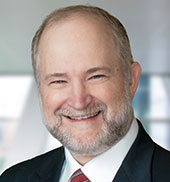Earlier this month, the FDA released proposed two-part Guidance on Internet and social media intended to assist prescription drugs and medical device manufacturers to accurately communicate online about their products. The FDA’s official blog contains helpful commentary on this two-part draft Guidance. The blog entry provides useful distinctions between the two guidance documents. Tom Abrams is the director of FDA’s Office of Prescription Drug Promotion in the Agency’s Center for Drug Evaluation and Research (CDER). He clearly expressed an expectation for substantive revision by the FDA by emphasizing the documents are “current thinking” and that the entire substantive area of “internet-related matters” is evolving within the FDA.
The first Guidance is limited to sources with character limitations, and, as you might expect, there are fewer shades of grey. The focus is on combining benefit with risk information. One element of the guidance that is repeated is the “requirement” that a form of direct access, i.e., a link, be given to users to enable greater access to a deeper level of information about risks, benefits and use in general.
The second Guidance addresses a more complex issue, misinformation from third parties. The guidance defines everything created by an independent third party as user-generated content, UGC. The apparent intention of the Guidance is to assure manufacturers and distributors subject to labeling requirements that their voluntary acts to correct misinformation by third parties will not be subject to labeling or advertising regulatory requirements, so long as the response to UGC is truthful and not misleading. This doesn’t hold true if the manufacturer or distributor is itself responsible for the UGC, such as from its own employees. Another instance where the Guidance does not apply is to blogs curated or edited by the manufacturer or distributor, since they have control over content.
As in the first Guidance, FDA recommends that the correction of misinformation be combined with access to FDA required labeling information, and notes that access to promotional labeling is not corrective or in compliance with the Guidance. The Guidance also provides, in recognition of the cumulative nature of blogs, that the manufacturer and distributor are not expected to correct all misinformation in a forum and should identify which entry in the forum is corrected. However, the correction of misinformation about risks must be accompanied by corrections about misinformation of efficacy.
For further discussions on social media and health care, stay tuned to our blog.


















